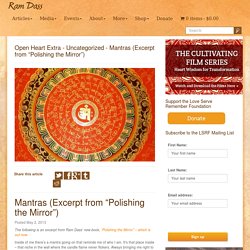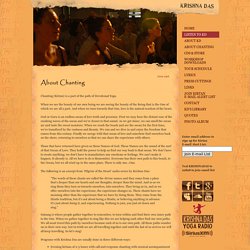

Mudras: The Healing Power in your Hands. “In this respect, Kundalini Yoga assumes that every area of the hand forms a reflex zone for an associated part of the body and the brain.

In this way, we can consider the hands to be a mirror for our body and our mind.” ~ Lothar Rüdiger Lütge, Kundalini yoga expert Practiced since antiquity in combination with pranayama, asanas and meditation, Mudras or Hand Gestures is a practice to improve your physical, mental and spiritual well-being. Our hands define our karma and fingers being the power points, are a link between individual Pranic force and universal cosmic energy. The subtle hand and finger movements make important connections in the nervous system and stimulate specific energy pathways or nadis. Human body is an amalgamation of 5 elements of nature – Earth, Air, Water, Space and Fire & each finger acts as a representative of one element.
Yoga For Healing. Restorative Yoga for Stress Relief. Alternate Nostril Breathing. Alternate Nostril Breathing, also known as Nadi Shodhana, is an extremely effective stress relief tool.

Emphasis: …an extremely effective stress relief tool. It might sound a bit woo woo, but it is in fact a breathing technique that is scientifically proven to reduce blood pressure, increase focus and reduce cortisol (using the gold standard for scientific studies — randomized and placebo-controlled). Not only that, but nadi shodhana is totally free, easy to do and available any time. This breathing exercise is a life hack that will reduce your stress level and your cortisol in a jiffy. (And we all know that cortisol is our best frenemy… When we have high cortisol, a plethora of symptoms arise, including fat around the tummy. You can use this technique any time you want. My children love this breathing practice too and utilize it throughout their days — especially right before homework time. Alternate Nostril Breathing (Nadi Shodhana) Steps 1. 2. 3. 4. 5. The Everything Kriya: Sat Kriya. Mantras - Ram Dass.
The following is an excerpt from Ram Dass’ new book, “Polishing the Mirror” – which is out now.

Inside of me there’s a mantra going on that reminds me of who I am. It’s that place inside – that niche in the wall where the candle flame never flickers. Always bringing me right to my heart where we dwell eternally. Krishna Das - About Chanting. Chanting (Kirtan) is a part of the path of Devotional Yoga.

When we see the beauty of our own being we are seeing the beauty of the Being that is the One of which we are all a part. And when we turn towards that One, love is the natural reaction of the heart. God or Guru is an endless ocean of love truth and presence. First we may hear the distant roar of the crashing waves of the ocean and we're drawn to that sound. As we get closer, we can smell the ocean air and taste the sweet moisture. Those that have returned have given us these Names of God. Yoga and Meditation Protect Cancer Survivors at Cellular Level. Meditation and yoga are renowned for their ability to help cancer survivors alleviate mental and emotional distress.

But now a significant new study has revealed that their benefits go even further into the cellular level: the findings show that yoga, meditation and social support protect the health of breast cancer survivors by helping to maintain telomere length. Telomeres are protective caps of DNA found at the ends of a chromosome. Since they keep the ends of the chromosome from fraying and deteriorating, they are often compared to a plastic tip on a shoelace. Three Pranayamas and their Ayurvedic / Psychological Effects - Ayurveda. Pranayamas or yogic breathing techniques have effects upon the doshas (viz.

Vata – Wind, Pitta – Bile and Kapha – Phlegm) in the body. But, they also have specific effects on the mind as per the four levels of the mind: Chitta or unconscious mind / mind-stuffBuddhi or the intellect, which governs our mental metabolism or (manasikagni).Manas or the emotional sphere of the mindAhamkara or the ego, which is a rajasic (agitating and motive) force These are mentioned as there are several levels of each of the above layers of the mind, divided into sattvic (pure, clear), rajasic (agitated, passionate) and tamasic (dark, delusional or ignorant) levels, which we shall discuss, relative to pranayamas or breathing techniques. Getting to Know the Language of Yoga. Originating in ancient India and considered to be one of the oldest languages on Earth, Sanskrit is still relevant to yoga practice today.

Sanskrit is, quite literally, the language of yoga. Many of the chants you sing in kirtan, the mantras you silently repeat in meditation, and the terms you hear in yoga class are ancient Sanskrit words. This Sanskrit glossary will help you comprehend and communicate philosophical concepts and subtle yoga practices that can be difficult to describe as concisely in English. If a word or phrase in a description appears in bold, it can be found under its own heading. The abbreviation "cf.
" is a Latin shorthand for "compare. " Abhyâsa: practice; cf. vairagya Âcârya (sometimes spelled acharya in English): a preceptor, instructor; cf. guru.